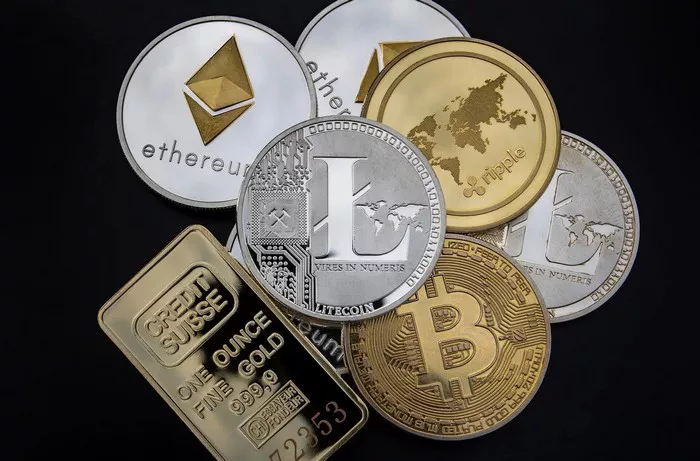Ripple, often represented by its native cryptocurrency XRP, is a digital payment protocol that aims to facilitate fast, low-cost cross-border transactions. Founded in 2012 by Chris Larsen and Jed McCaleb, Ripple Labs developed the protocol to address inefficiencies in traditional banking systems. Unlike many other cryptocurrencies, Ripple’s primary focus is not decentralization but rather enhancing the efficiency of international payments.
Ripple operates on a distributed ledger technology called the Ripple Protocol Consensus Algorithm (RPCA), which enables real-time gross settlement system (RTGS), currency exchange, and remittance network. This distinguishes Ripple from decentralized cryptocurrencies like Bitcoin and Ethereum, as transactions on the Ripple network do not require mining and are confirmed through a consensus process among Ripple validators.
Investment Process
Investing in Ripple involves several steps to ensure a secure and seamless experience:
1. Research and Education: Before investing in Ripple, it’s crucial to understand the cryptocurrency market, Ripple’s technology, and its potential use cases. Additionally, familiarize yourself with the risks involved in cryptocurrency investments.
2. Setting Up a Wallet: The first step is to choose a secure digital wallet to store your XRP. There are various types of wallets available, including hardware wallets, software wallets, and paper wallets. Hardware wallets are often considered the most secure option, as they store your XRP offline, away from potential cyber threats.
3. Choosing a Platform: Next, select a reputable cryptocurrency exchange or trading platform where you can buy and sell XRP. Popular platforms that support Ripple include Coinbase, Binance, Kraken, and Bitstamp. Ensure that the platform you choose is regulated and offers robust security measures to protect your investment.
4. Making a Purchase: Once you’ve set up your wallet and chosen a platform, you can proceed to purchase XRP. This typically involves linking your bank account or credit/debit card to the exchange and placing a buy order for XRP at the current market price.
Risks and Considerations
While investing in Ripple offers potential rewards, it’s essential to be aware of the associated risks:
1. Volatility: Like all cryptocurrencies, XRP’s value is subject to significant fluctuations, which can result in substantial gains or losses for investors.
2. Regulatory Uncertainty: Ripple has faced regulatory scrutiny in various jurisdictions, particularly regarding its classification as a security. Legal challenges and regulatory changes could impact the value and adoption of XRP.
3. Centralization Concerns: Critics argue that Ripple’s consensus mechanism, which relies on a network of trusted validators, lacks the decentralization and censorship resistance of other cryptocurrencies.
Market Analysis
The market status of Ripple is influenced by various factors, including:
1. Price Trends: XRP’s price is influenced by market demand, investor sentiment, and broader trends in the cryptocurrency market. Historical price data can provide insights into potential future movements.
2. Adoption and Partnerships: Ripple’s value is closely tied to its adoption by financial institutions and strategic partnerships with banks, payment providers, and other organizations. Positive developments in this regard can drive XRP’s price upward.
3. Regulatory Developments: Regulatory decisions and legal proceedings can significantly impact Ripple’s market dynamics. Clarity on regulatory matters can either boost confidence in XRP or lead to uncertainty among investors.
Security Measures
To secure your investment in Ripple, consider the following measures:
1. Secure Storage: Store your XRP in a reputable digital wallet with robust security features, such as encryption, multi-factor authentication, and offline storage options.
2. Risk Management: Diversify your cryptocurrency portfolio to mitigate the impact of potential losses from fluctuations in XRP’s price. Additionally, only invest funds that you can afford to lose.
3. Stay Informed: Keep yourself updated on the latest developments in the cryptocurrency market, including security threats, regulatory changes, and technological advancements.
Future Prospects
Despite challenges and uncertainties, experts remain optimistic about Ripple’s long-term viability:
1. Continued Adoption: Ripple’s partnerships with financial institutions and payment providers indicate growing acceptance of its technology for cross-border payments.
2. Regulatory Clarity: Clarity on regulatory matters could pave the way for broader adoption of Ripple’s technology and increased investor confidence in XRP.
3. Innovation and Development: Ripple Labs continues to innovate and improve its technology, with ongoing developments aimed at enhancing the scalability, security, and usability of the Ripple network.
Conclusion
In conclusion, investing in Ripple requires thorough research, careful consideration of risks, and adherence to best practices in security and risk management. While the cryptocurrency market can be volatile and unpredictable, Ripple’s focus on improving cross-border payments and its potential for continued adoption suggest promising prospects for long-term investors.


